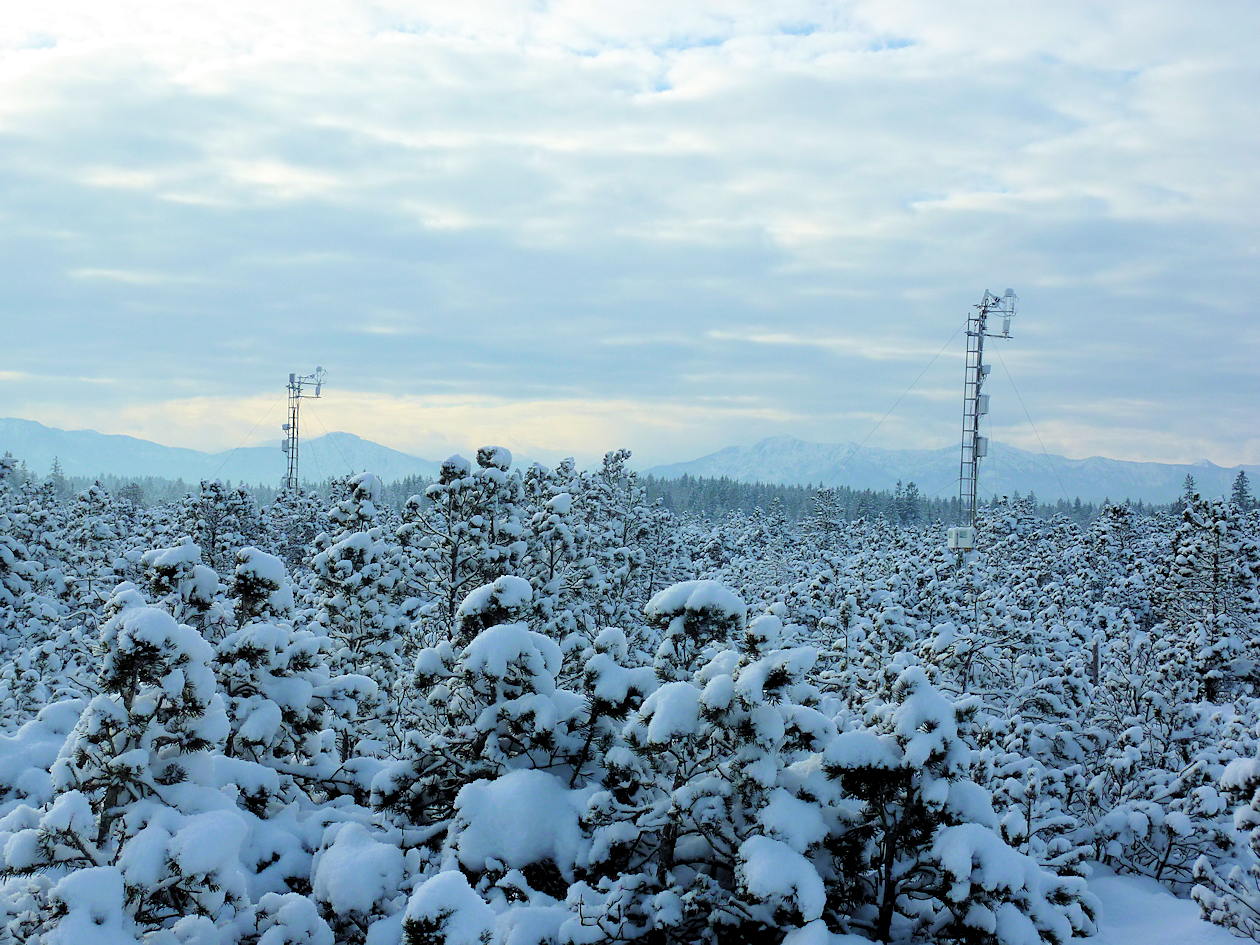Schechenfilz

The Karlsruhe Institute of Technology (Institute of Meteorology and Climate Research-Atmospheric Environmental Research, Campus Alpin) operates four climate- and eddy covariance measurement stations within the TERENO Bavarian Alps/pre-Alps Observatory; three of these sites are also ICOS stations (Graswang, Fendt and Schechenfilz).
The ICOS “associated site” (class 3) Schechenfilz (47.806°N 11.328°E, 590 m a.s.l) is a 111 ha large near-natural bog-ecosystem. The ICOS measurement station is located in the center of the bog, which is characterized by slow growing bog-pines (Pinus mugo ssp. rotundata) with an average height of only 2 m. Eddy covariance measurements started in 2010 at a 6 m high tower, equipped with an open-path infrared gas analyzer LI-7500 for CO2 and H2O measurements and a 3-D anemometer C-SAT 3. In 2012 the instrumentation was supplemented by a quantum-cascade laser (“Aerodyne”) to realize CH4 and N2O flux measurements. In addition, 26 meters to the north of the first tower, a second tower was set up and equipped with a C-SAT 3, an enclosed-path LI-7200 (for assessing CO2 and H2O exchange) and the open path laser LI-7700 for methane flux measurements in the same year. The greenhouse gas exchange of the bog-ecosystem can be characterized as “climate-neutral”, it is a consistent and robust small CO2 sink (Hommeltenberg et al., 2014a), but usually also a small methane source (Hommeltenberg et al., 2014b). Only a few hundred meters in the north of the ICOS-D eddy covariance station, manual chamber measurements are conducted by the University of Applied Science Weihenstephan–Triesdorf. Different chamber plots along a moisture gradient want to reflect different stages of vegetation succession and regeneration after restoration in 2001. The eddy covariance and chamber measurements at this bog-ecosystem are essential contributions for better understanding of the greenhouse gas exchange between a near-natural bog pine ecosystem and the atmosphere.